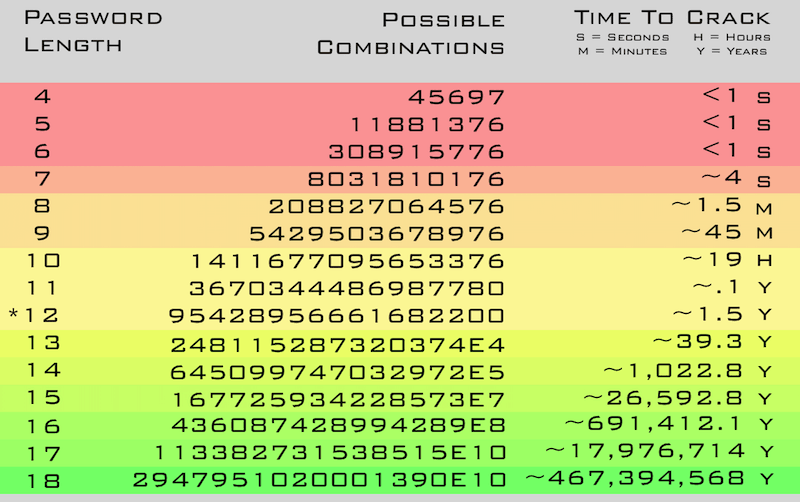© 2023 Bidibo Tech
Contact form
Labels
Labels
Translate
Popular Posts
Published by
Bidibo's Tutorial
On
Apple Vision Pro: Revolutionizing the Future of Visual Technology
- Get link
- X
- Other Apps
 |
| This image shows how much time it takes to crack you passwords |
Introduction:
In an era where data security is paramount, passwords play a crucial role in protecting our online identities and sensitive information. However, advancements in artificial intelligence (AI) have raised concerns about the effectiveness of traditional password protection. This blog explores how AI is revolutionizing the field of password cracking, making it faster and more efficient than ever before.
The Power of AI in Password Cracking:
AI algorithms have demonstrated remarkable capabilities in analyzing patterns, recognizing trends, and processing vast amounts of data. These abilities have not gone unnoticed by cybercriminals, who are leveraging AI to crack passwords with unprecedented speed.
1. Brute-Force Attacks:
AI-powered password cracking tools utilize machine learning algorithms to optimize the process of brute-force attacks. Traditionally, brute-force attacks involved trying every possible combination of characters until the correct password was found. With AI, these attacks are more refined and intelligent, enabling the system to prioritize combinations that are more likely to succeed based on patterns and known information about the user.
2. Advanced Dictionary Attacks:
Dictionary attacks involve trying a list of commonly used words or phrases as passwords. AI algorithms can be trained on extensive datasets to create customized and sophisticated dictionaries based on user-specific information such as social media posts, online profiles, and leaked password databases. This enables the AI to generate more accurate guesses and significantly increase the chances of cracking passwords.
3. Predictive Modeling:
AI algorithms can analyze existing password databases to uncover common patterns and trends in password creation. By understanding how users typically structure their passwords, AI models can predict and generate likely variations. This approach is highly effective when users employ predictable patterns such as using simple substitutions (e.g., "P@ssw0rd") or appending numbers at the end of their passwords.
Mitigating the Risks:
While AI-powered password cracking poses a significant threat, there are several measures individuals and organizations can adopt to enhance their defenses:
1. Strong Password Policies: Encourage users to create complex, unique passwords that include a mix of upper and lowercase letters, numbers, and special characters. Additionally, implementing password expiration and lockout policies can limit the effectiveness of brute-force attacks.
2. Two-Factor Authentication (2FA): Implementing 2FA adds an extra layer of security by requiring users to provide an additional verification factor, such as a fingerprint, SMS code, or hardware token, alongside their password.
3. Password Managers: Encourage the use of password management tools that generate and store complex passwords securely. Password managers can help users maintain a unique and strong password for each online account without the need to remember them all.
4. Adaptive Authentication: Implement systems that can detect and respond to suspicious activities. By monitoring user behavior patterns, adaptive authentication systems can identify unusual login attempts and prompt for additional verification.
Conclusion:
AI's influence on password cracking is a double-edged sword. While it poses a significant threat to traditional password security, it also drives the need for stronger authentication methods and heightened cybersecurity measures. As technology continues to evolve, it is essential for individuals and organizations to stay vigilant, adapt to new security practices, and prioritize data protection to counter the advancements made by AI in cracking passwords. Remember, a strong password is the first line of defense, and proactive measures can go a long way in safeguarding our digital lives.